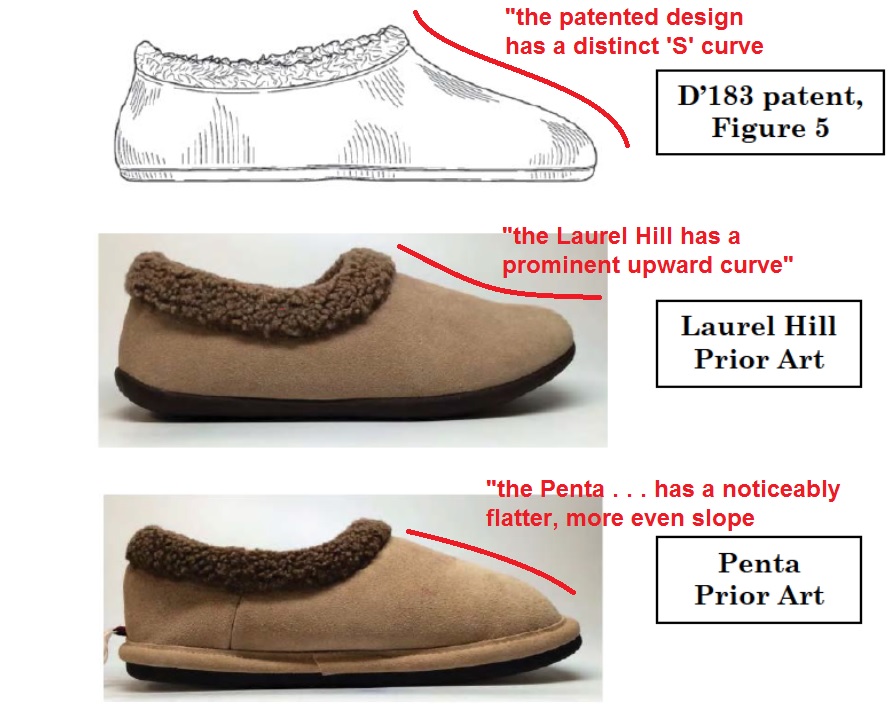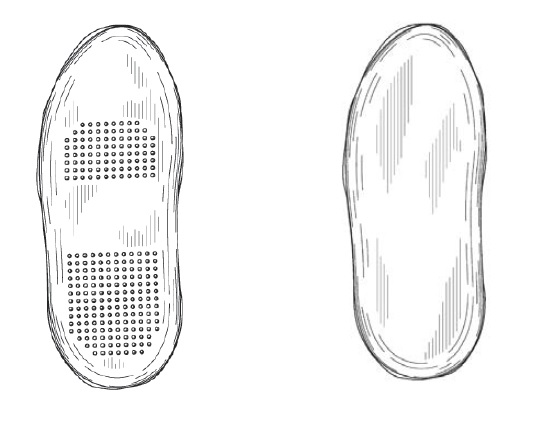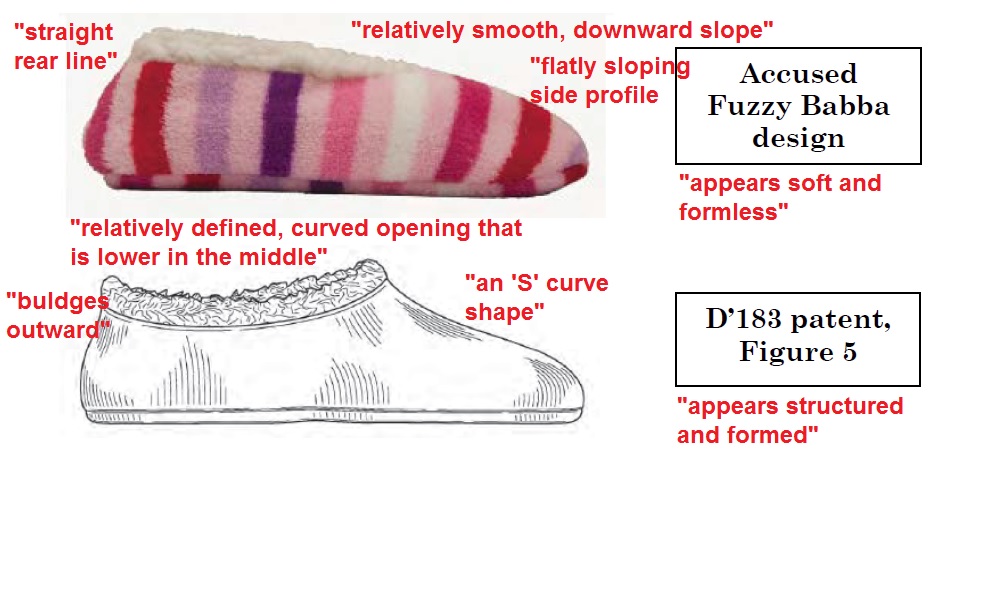In High Point Design LLC v. Meijer, Inc., [2014-1464], the Federal Circuit in a non-precedential, but still instructive decision, reversed summary judgment of anticipation but affirmed summary judgment of non-infringement of U.S. Patent No. D598183 on a Slipper.
In reversing the district court’s finding of anticipation, the Federal Circuit said that “Design patent anticipation requires a showing that a single prior art reference is ‘identical in all material respects’ to the claimed design.” View the evidence in the light most favorable to the patent owner, the Federal Circuit found that a reasonable jury could have found that there was not clear and convincing evidence of anticipation.
The Federal Circuit criticized the distraction court for not performing a side-by-side comparison, but instead concluding that the claimed design and the prior art share the same characteristics. The Federal Circuit noted that the district court’s analysis was “on too high a level of abstraction,” failing to focus on the distinctive visual appearance of the prior art and the claimed design. The detail of the analysis that the Federal Circuit undertook was instructive:
The Federal Circuit also pointed to differences in the soles of the slippers, resurrecting the infamous Contessa Food Prods., Inc. v. Conagra, Inc., shrimp platter case.
While the Federal Circuit reversed the district court’s summary judgment of anticipation, it affirmed the district court’s judgment of non-infringement with a similarly detailed comparison between the accused product and the patent.
The district court conducted a side-by-side comparison between the claimed design and the accused slippers, and concluded that the accused slipper “evokes a soft, gentle image” while the patented design “appears robust and durable.” The Federal Circuit agreed, finding that “the patented and accused designs bring to mind different impressions.” The Federal Circuit characterized the accused design as “soft and formless” while the patent design appeared “structured and formed.”
Differences in the soles of the designs also factored into the determination.
The Federal Circuit recognized that both designs essentially consist of a slipper with a fuzzy portion extending upward out of the foot opening, but said that such high-level similarities, are not sufficient to demonstrate infringement.
Although not precedential, the opinion is instructive on how to compare designs for purpose of anticipation and for purposes of infringement.



